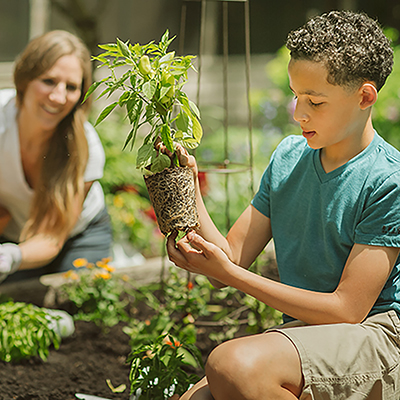How to Grow Garlic
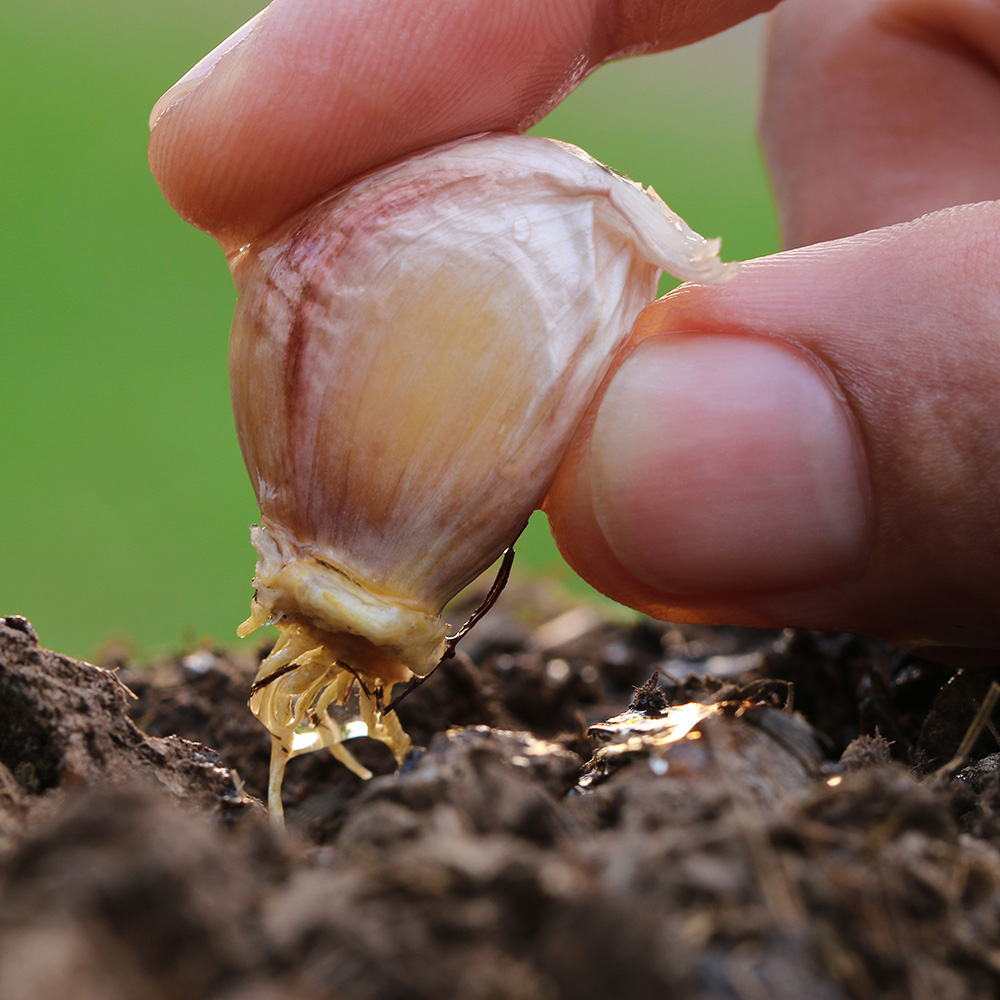
Last updated September 7, 2023
When temperatures start to cool down in late summer, it’s time to plant garlic bulbs in your home garden. Garlic is the last vegetable of the season to go into the ground, specifically after the first frost in October and before the end of November, to avoid cold winters.
Garlic cloves planted in the fall slowly grow roots all winter and show vigorous green growth first thing in spring. Garlic is ready by early summer, leaving room in the garden for another vegetable after the last bulb is harvested and saved. After garlic has been planted and mulched, it needs no further attention until plants poke up through the mulch in spring or early summer.
Tip: For a twist, try Chinese leeks, known also as garlic chives. This is grown not for the bulb but rather for its tasty stems and its small flower stalk.
Difficulty:
Beginner
Duration:
2-4 hours
Table of Contents
Confirm Your Garlic Clove
Prepare Your Planting Area
Break Garlic Bulbs
Dig Rows in the Bed
Plant Cloves
Mulch the Soil
Confirm Your Garlic Clove
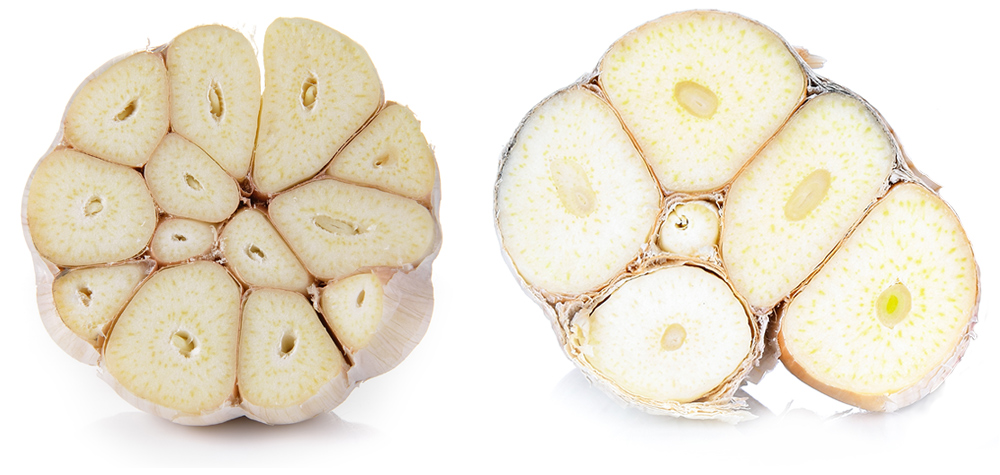
There are two types of garlic cloves:
- Softneck garlic varieties (above, left) are more commonly available in supermarkets because they're easier to grow in a variety of climates.
- Hardneck garlic varieties (above, right) are larger and easier to peel and are popular with chefs for their variety of complex flavors. These are typically found at natural food stores or farmers’ markets.
Prepare Your Planting Area

- Choose a sunny, very well-drained spot in your garden bed to grow garlic, and add balanced organic fertilizer in the bottom of the furrows.
- Use a digging fork to mix in 1-inch layer of compost with fertilizer and soil.
- Garlic is a moderately heavy feeder and placing fertilizer at the roots ensures the nutrients will still be there in spring, when the plants need them most.
Break Garlic Bulbs

- Pull apart the garlic bulb, leaving the paper coat on the cloves.
- The cloves should be white, not brown, and there should be between 4 to 7 cloves per bulb.
- Do not be concerned if you have green garlic tops, that is common.
Dig Rows in the Bed
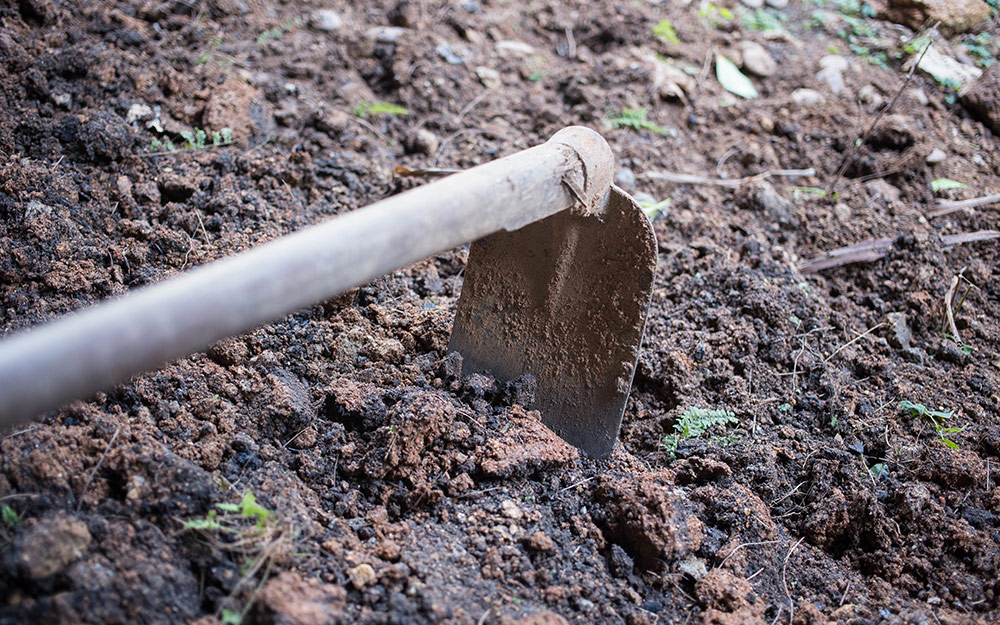
- Shape 4-inch deep planting furrows with a hoe.
- Garlic works well when grown in double or triple rows, with rows spaced at least 8 inches apart.
Plant Cloves
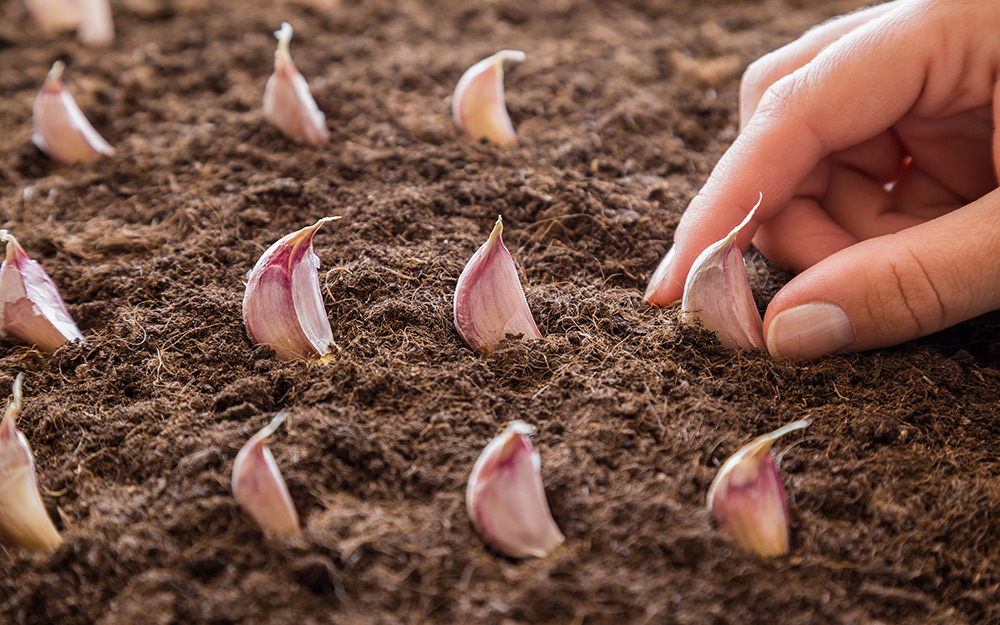
- Plant the cloves’ roots about 3 inches deep, with the head of the garlic pointed end up.
- Depending on the size of the cloves, space them anywhere from 4 to 8 inches apart.
Small space gardeners can grow garlic in planters. Here are tips for growing garlic in containers:
- Select a planter at least 18 inches in diameter. Containers can be plastic, glazed ceramic or metal. Unglazed terra cotta is not usually frost-hardy and is not recommended for growing garlic. Make sure your container has drainage holes.
- Use a good quality, well-draining potting mix amended with organic compost in a 3:1 ratio.
- You can add a slow-release organic fertilizer to the soil before planting. Remember to reapply in early spring.
- Plant garlic cloves pointy end up, 3 inches deep and 3 inches apart.
- Blanket the planter with a 2-inch layer of mulch or straw.
- Place the garlic planter where it will get 6 to 8 hours of sunlight each day. Don't let it dry out. If you have a long dry spell without rain, be sure to water.
- When temperatures warm up in spring, move the container to the sunniest part of your yard and top with more fertilizer or compost.
Tip: To yield large bulbs when planting garlic, plant the largest cloves.
Mulch the Soil
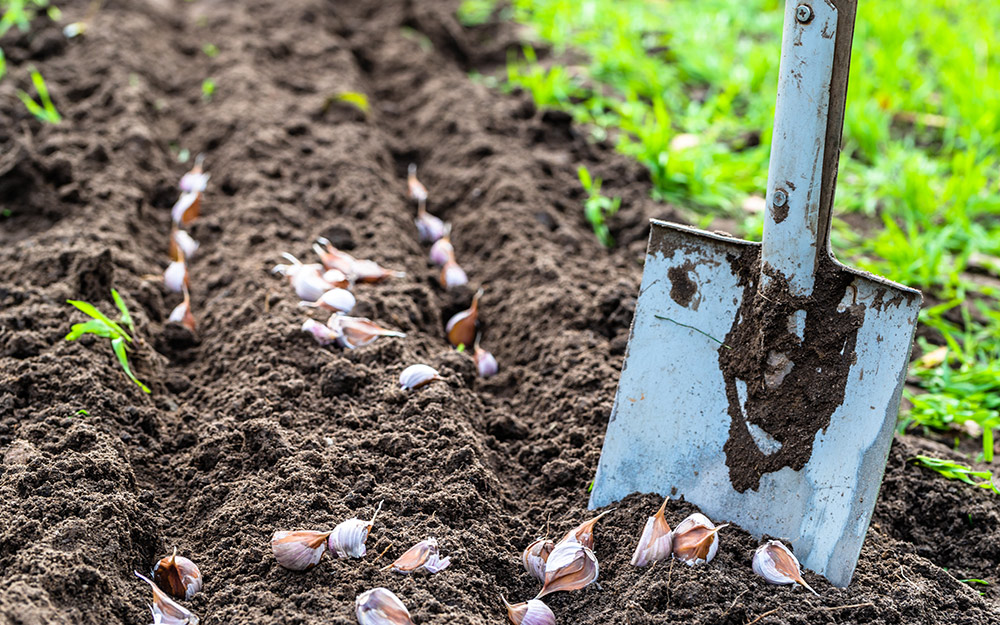
- Mulch the planting and cover the cloves up to 6 inches deep with soil, preferably with plenty of organic matter like chopped leaves, leaves mixed with grass clippings, pine needles or straw.
These lofty mulches will pack down over time, and insulate the plants from weather extremes like a snug blanket. - Mulching over your garlic bed after planting suppresses weeds, slows evaporation and keeps the garden tidy.
How to Care for Garlic in the Garden

- Garlic is low maintenance while growing. Keep it watered and mulched and wait for the scapes in spring.
- During the growing season, give it about an inch of water per week.
- Garlic scapes should emerge in early spring. Scapes are the tender stem and flower bud of the plant.
Fertilize garlic in spring when the plants are about 8 inches tall and show steady, new growth. Just before a rain is expected, add a heavy dusting of balanced organic fertilizer between plants.
Tip: Label your seed garlic so each variety can be easily identified.
Grilled Garlic Bread Recipe
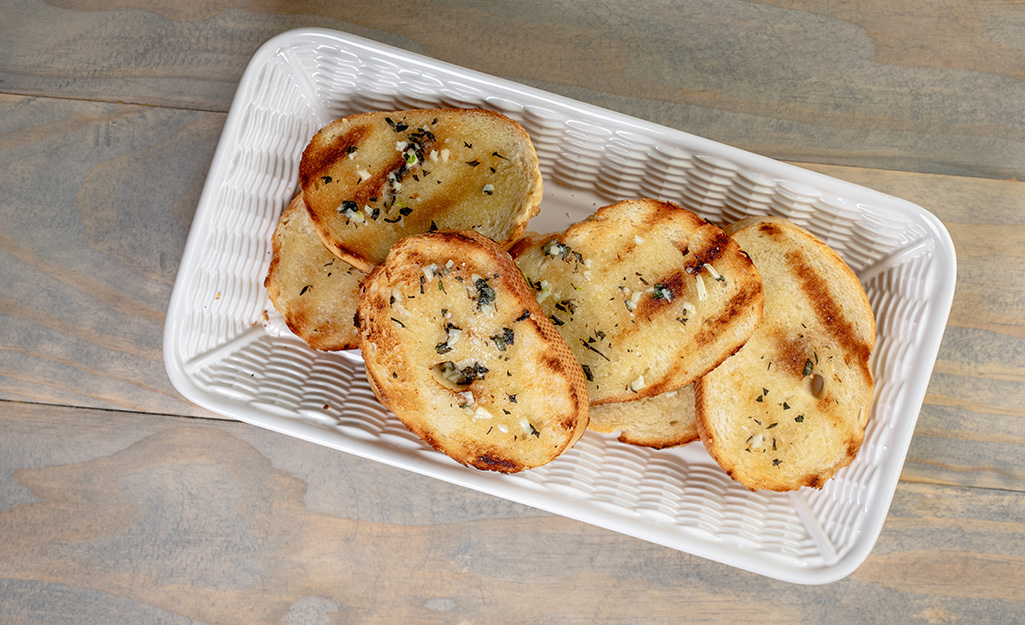
Grilled Garlic Bread with Oregano Recipe provided by Weber:
Select your favorite loaf of bread, cut it into thick slices and smear it with butter for a deeply flavored, grilled garlic bread. It is a great companion to any meal, and the possibilities for adding toppings, such as grilled onions and peppers or grilled mushrooms with crumbled cheese, make it an option for an appetizer.
Serves: 4 to 6 (makes 8 slices)
Prep time: 10 minutes
Grilling time: 2 to 3 minutes
Ingredients:
- 1/2 cup (1 stick) unsalted butter, divided
- 3 tablespoons freshly grated Parmigiano-Reggiano cheese
- 2 garlic cloves, minced
- 2 teaspoons minced fresh oregano leaves
- 8 slices Italian-style or other coarse country bread, each about 1/2-inch thick and 4 to 6 inches wide
Instructions:
In a small saucepan on the stove, melt the butter. Transfer 1/4 cup of the butter to a small bowl. Add the cheese, garlic and oregano to the butter in the saucepan. Stir to combine. Keep warm.
Prepare the grill for direct cooking over medium heat (350 to 450 degrees Fahrenheit).
Brush the cooking grates clean. Brush the bread slices on both sides with the melted butter in the small bowl. Grill the bread slices over direct medium heat, with the lid closed, until toasted and lightly marked on both sides, about 2 minutes, turning once. Generously brush the top side of each slice with the garlic butter in the saucepan, and continue grilling with the lid closed, until the garlic butter bubbles, 30 seconds to 1 minute more.
Remove from the grill. Serve warm.
Whether you need the right planters, seeds or garden soil, The Home Depot delivers
online orders
when and where you need them.

